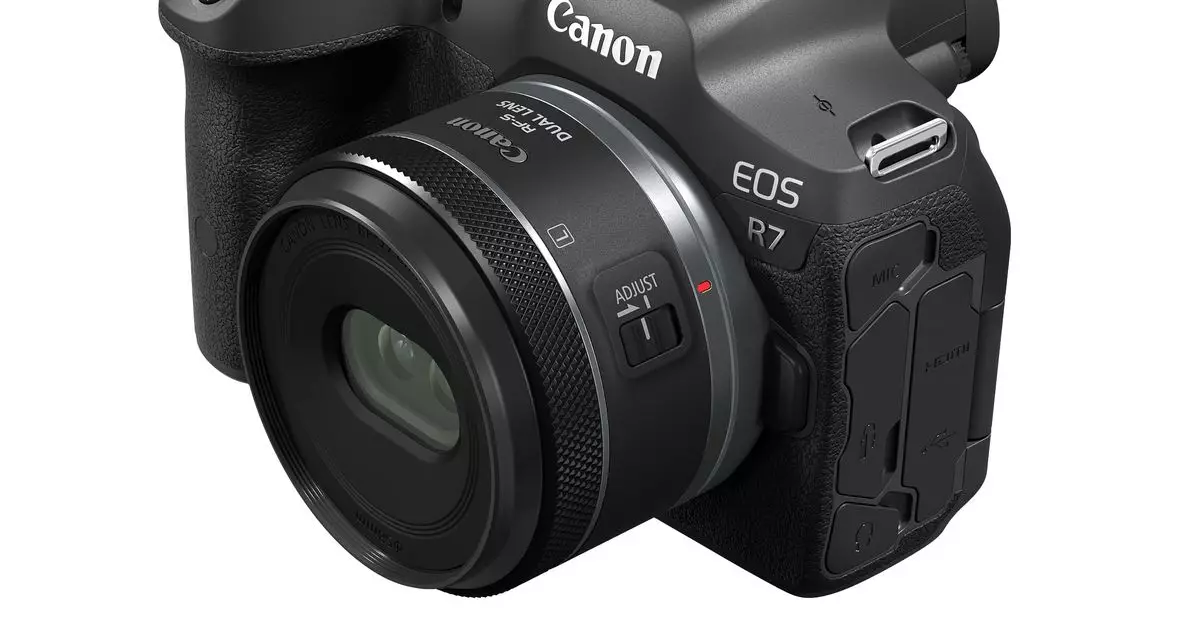The landscape of 3D content creation is evolving rapidly, and Canon has taken a significant step forward with its latest innovation, the RF-S 7.8mm F4 STM Dual lens. Announced recently, this lens stands out in a crowded market, catering specifically to creators looking for a competent yet affordable solution for 3D video and VR content.
Aims to Democratize 3D Photography
Canon’s recent lens launch, teased at Apple’s WWDC 2024 event, aims to lower the barriers for those interested in creating immersive 3D experiences. Traditionally, 3D equipment has been out of reach for many due to exorbitant price points. Canon’s RF-S 7.8mm lens offers a more accessible option for creators who want to experiment with content for VR platforms like the Meta Quest 3 or the Apple Vision Pro without breaking the bank. With a target retail price of $449.99, this lens is considerably cheaper than its counterparts, giving budding photographers a viable entry point into 3D content creation.
Compatibility and System Requirements
This lens is designed to work seamlessly with Canon’s EOS R7 camera, which retails starting at $1,299. While the total investment of around $1,700 may seem steep to casual consumers, it remains a worthwhile alternative compared to some of Canon’s more professional offerings that can exceed $2,500. By maintaining compatibility with standardized RF mounts, Canon ensures that users can easily incorporate this lens into their existing setups.
The lens itself features an aperture range of f/4 to f/16, supporting autofocus mechanisms and offering manual focus controls for both left and right sides of the frame. This feature would likely appeal to experienced photographers looking to fine-tune their depth perception and enhance their creative flexibility when shooting 3D content.
However, it’s critical to understand what compromises have been made for this lower price point. The RF-S 7.8mm lens has a limited field of view, capturing only 63 degrees compared to higher-end models that can capture up to 180 degrees, mimicking human peripheral vision. This narrower angle means that while the lens is effective for close-up subjects, its 3D effectiveness diminishes with distance, particularly beyond 20 inches. The optical path positions the lens elements closer together, at just 11.8mm apart, which is significantly less than the 60mm spacing of Canon’s dual-fisheye offerings.
These specifications suggest that the RF-S 7.8mm lens excels in capturing intimate, close-range subjects rather than expansive landscapes. For creators focused on storytelling through detailed environments or action shots that utilize greater depth perception from afar, considerations may need to be made in lens selection.
Post-Processing Requirements
Another critical aspect to note is the necessity for post-processing. Images and footage shot with the RF-S 7.8mm lens are not immediately ready for VR or AR consumption. They need to undergo processing using Canon’s EOS VR Utility software or a plugin available for Adobe Premiere Pro. Both options require a subscription, adding an additional layer of cost that potential users must be aware of. However, these software tools are essential for transforming raw footage into immersive 180-degree 3D video content.
As Canon continues to innovate, the RF-S 7.8mm F4 STM Dual lens could signal a shift in the accessibility of high-quality 3D content creation. While it may have limitations compared to its more expensive counterparts, the lens adequately meets the needs of many creators eager to test the waters of 3D technology without the financial strain typically associated with such a pursuit.
Canon’s RF-S 7.8mm F4 STM Dual lens holds great promise for the evolving field of 3D photography and videography. With the rapidly growing demand for immersive experiences, this lens represents a potential cornerstone for passionate creators—offering a perfect blend of affordability and quality in an ever-competitive market. As its official release approaches in November 2024, anticipation builds for this innovative tool that could very well shape the future of 3D content creation.

